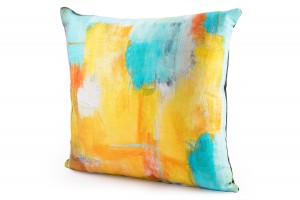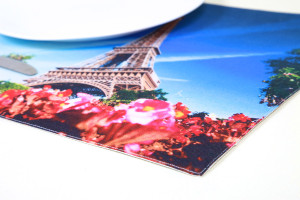30 Apr Transfer Printing vs. Digital Printing
Let us delve into an investigation into the nature and key features of Transfer Printing in comparison to Digital Printing.
What is it?
Transfer printing, or sublimation printing as it is also known, is a method or process that involves the printing out of a design onto a flexible base material and then later transferred onto a textile.
Digital printing is an invention that involves artwork being processed by a computer, and then printed directly on to the surface of the fabric.
Key Features
1. Imaging features: Both transfer printing and digital printing give designers the ability to create designs in a 1000s of colours, something that has never been possible with traditional screen printing.
2. Design detail: Transfer printing allows the designer to create certain forms of designs or effects that cannot be replicated by any other form of printing, while digital printing allows for a photographic print, with much more detail than traditional forms of printing.


Source: www.suraaj.com
3. Costing: The designs in Transfer printing are printed onto non expensive and non bulky substrate (base materials) like paper and only then printed onto the more expensive fabrics according to the demand for the design saving both time and money. On the other hand, in digital printing, the computer and printers are large one time investments, but allow cost savings during short runs which are not feasible for screen printing due to the cost of screens.
4. Trained Labour: The process of transfer printing is also uncomplicated and fairly easy to execute, so it does not require a high level of skill. On the other hand, digital printing requires skilled labour to be on hand to execute it.
5. Ease of Production: Transfer printing eases the production of short run repeat orders while digital printing is the best process for single garment orders.
6. Accuracy of Production: The process of transfer printing requires fewer pre- and post-processes, in comparison to digital printing, which allows for lower wastage or errors in printing. Digital printing technology, however, is progressing rapidly.
7. Equipment and fabrics: Transfer printing is more commonly available for man-made fibre fabrics such as polyester. Digital printing is available for both natural fibre fabrics (such as cotton) and man-made fibre fabrics (such as polyester). However, different machinery is required for each type of fabric since the inks used for natural fabrics (reactive inks) is different from those used in man-made fabrics (disperse dyes).

Source: www.suraaj.com
Where do they stand today?
Both transfer printing and digital printing are making rapid strides technologically and practically, but as of now neither has taken over the market and so both exist in tandem. It remains up to the seller to decide which method would be the best for each particular order.
Check out this link to see some of our digital prints.



